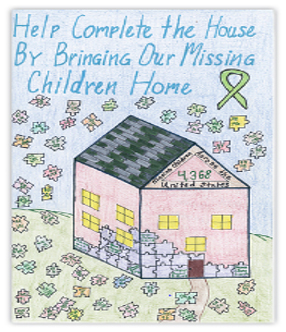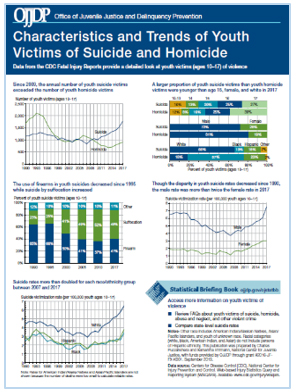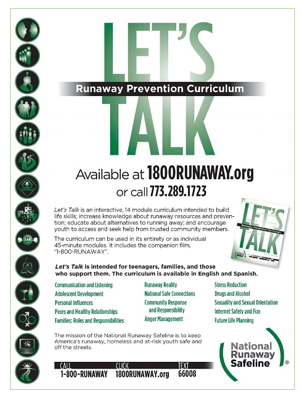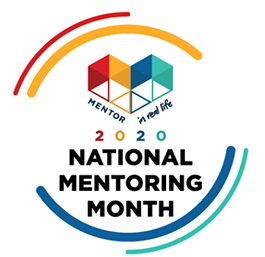Fiscal Year 2020 Coordinated Tribal Assistance Solicitation Includes Two OJJDP Funding Opportunities
On December 4, 2019, the Department of Justice released the fiscal year (FY) 2020 Coordinated Tribal Assistance Solicitation, which enables tribes, Alaska Native villages, and tribal consortia to submit a single application for the Department of Justice’s competitive grant programs, known as purpose areas. CTAS includes two OJJDP funding opportunities:
- Purpose Area #8: Juvenile Tribal Healing to Wellness Courts. With the goal of reducing substance abuse and related delinquent behavior, juvenile healing to wellness courts use a team approach that brings together community healing resources with the tribal justice process. While holding youth accountable for delinquent behavior, the team provides structured and phased substance abuse treatment and rehabilitation services.
- Purpose Area #9: Tribal Youth Program. OJJDP’s Tribal Youth Program supports the efforts of tribal governments to prevent juvenile delinquency and respond to and care for justice-involved youth. The program includes prevention services (e.g., school dropout prevention programs, afterschool programs); interventions for court-involved tribal youth (e.g., graduated sanctions, restitution, diversion); improvements to the tribal juvenile justice system (e.g., indigenous justice strategies, tribal youth courts, advocacy programs); and substance abuse prevention and mental health services.
Applications for CTAS are submitted online through the Department’s Grants Management System (GMS). Applicants must register with GMS before submitting an application. The application deadline is 9 p.m. EST, Feb. 25, 2020. For more information about CTAS, visit the Department of Justice website.
OJJDP-Funded Research Presented at American Society of Criminology Conference
The 75th annual meeting of the American Society of Criminology, held November 13–16, 2019, included presentations on OJJDP-supported research and evaluation projects as part of the event’s “NIJ [National Institute of Justice] Day.” The meeting, held in San Francisco, CA, featured the theme “Criminology in the New Era: Confronting Injustice and Inequalities.”
A presentation titled “Studies of State-Level Juvenile Justice System Improvement Efforts” offered findings from OJJDP research that examined whether certain juvenile justice policies and practices produce better outcomes for youth, improve public safety, and achieve a greater return on taxpayer investments. The panel discussed the impact of Kentucky’s Senate Bill 200, which included policy changes to provide more targeted treatment to youth who come in contact with the juvenile justice system; Virginia’s Regional Service Coordinator Model, designed to reduce disparities in services in rural communities; and Maryland’s Accountability and Incentives Management system, a graduated response approach for youth under community supervision. Discussion included possible policy and practice implications for other jurisdictions seeking to implement similar changes.
The session “Multi-Site Studies of Risk and Needs Assessments in Juvenile Justice” discussed a portfolio of OJJDP-funded research and evaluations examining risk and needs assessment instruments in juvenile justice. The panel highlighted factors that promote effective implementation of these instruments and recommendations for improving practice; outcomes associated with the implementation of risk and needs assessments and risk-need-responsivity approaches to case management; alternative benchmarks, measurement, and analytic procedures to evaluate risk and needs assessments; and methods for optimizing risk and needs assessments to improve their predictive performance.
AMBER Alert Website Updated
As the current National AMBER Alert Coordinator, Katharine T. Sullivan, Principal Deputy Assistant Attorney General for the Office of Justice Programs, assists states in the development of state AMBER Alert plans and provides guidance on the issuance and dissemination of AMBER Alerts. The purpose of the state plans is to notify the public and law enforcement of child abductions and to coordinate search efforts for missing children.
In support of the National Coordinator, the Office of Justice Programs has updated the America's Missing: Broadcast Emergency Response (AMBER) Alert website. As the official repository of AMBER Alert information, this website continues to provide a brief history of the program, news and messages about the program, guidelines for issuing Alerts, links to state contacts, and information and resources to support the AMBER Alert program.
The website links to resources that support the AMBER Alert program through national partners and OJJDP grantees. These partners include the National Center for Missing & Exploited Children, AMBER Alert Training and Technical Assistance Program, Federal Communications Commission, and the Federal Emergency Management Agency. The updated website now features enhanced information on AMBER Alert in Indian Country. Information includes access to the AMBER Alert in Indian Country website, a summary of the AMBER Alert in Indian Country Initiative, and other training and technical assistance resources.
New Issue of The AMBER Advocate Newsletter Now Available
OJJDP has released the latest issue of The AMBER Advocate newsletter. This issue includes features articles about:
- The tragic ties between missing and abducted children and child sex trafficking, spotlighted at the 2019 National AMBER Alert Symposium,
- The Navajo Nation symposium on child sex trafficking in tribal communities.
- European police officers’ animated video created for International Missing Children’s Day.
The AMBER Advocate newsletter is available online.
 NetSmartz Features New Online Safety Product for Children
NetSmartz Features New Online Safety Product for Children
The National Center for Missing & Exploited Children’s online safety education program, Netsmartz, provides age-appropriate activities to help teach children how to be safer online. Netsmartz has launched a new video series for children, Into the Cloud, which features episodes on different elements of online safety, from strategies for handling cyberbullying to recognizing and reporting unsafe and inappropriate interactions and content.
Entries Sought for 2020 National Missing Children’s Day Poster Contest
 Shown above is the winning poster for the 2019 National Missing Children's Day poster contest. This artwork will inspire the poster and artwork for the 2020 commemoration.
Shown above is the winning poster for the 2019 National Missing Children's Day poster contest. This artwork will inspire the poster and artwork for the 2020 commemoration.With an annual theme of “Bringing Our Missing Children Home Safely,” each year OJJDP invites fifth graders to participate in the Missing Children’s Day poster contest. The annual contest creates an opportunity for schools, law enforcement, and child advocates to discuss the issue of missing and exploited children with youth, parents, and guardians and to promote child safety.
Each state hosts its own poster competition, and the winning poster from each state is submitted to OJJDP in a contest to select the national winner. OJJDP invites the child who designed the winning poster, his or her teacher and parents, and the state clearinghouse manager to Washington, DC, to participate in the National Missing Children’s Day commemoration in May.
The winning poster serves as the inspiration for the National Missing Children's Day poster and artwork for the following year. Prospective participants should check with their state contest manager for the submission deadline. The National Missing Children's Day ceremony will be held on May 20, 2020. Contest rules, contact information for state contest managers, discussion materials, and additional information are available in the contest packet.
Data Snapshot Examines Trends in Youth Suicide
 The OJJDP Statistical Briefing Book has added a Data Snapshot that provides a look at characteristics and trends of youth victims of suicide and homicide. The Snapshot draws on data from the Centers for Disease Control and Prevention Fatal Injury Reports. Suicide rates more than doubled for each race and ethnicity group between 2007 and 2017. A larger proportion of youth suicide victims than youth homicide victims were younger than age 15, female, and white in 2017. Although the disparity in youth suicide rates decreased since 1990, the male rate was more than twice the female rate in 2017.
The OJJDP Statistical Briefing Book has added a Data Snapshot that provides a look at characteristics and trends of youth victims of suicide and homicide. The Snapshot draws on data from the Centers for Disease Control and Prevention Fatal Injury Reports. Suicide rates more than doubled for each race and ethnicity group between 2007 and 2017. A larger proportion of youth suicide victims than youth homicide victims were younger than age 15, female, and white in 2017. Although the disparity in youth suicide rates decreased since 1990, the male rate was more than twice the female rate in 2017.
One Program and Two Practices Rated “Effective” by OJJDP Model Programs Guide and CrimeSolutions.gov
Protecting Strong African American Families is a program that is designed to improve family functioning and enhance youth development by targeting parents’ relationships and parenting skills. For the intervention group, there were statistically significant increases in levels of parental monitoring and positive self-concept, as well as statistically significant decreases in conduct problems and substance use initiation. There were no significant effects for racial pride socialization.
Cognitive behavioral therapy is a problem-focused, therapeutic approach that attempts to help people identify and change dysfunctional beliefs, thoughts, and patterns that contribute to their problem behaviors. Cognitive Behavioral Therapy for Anger-Related Problems in Children and Adolescents is rated “effective” for reducing aggression and anger expression, and improving self-control, problem-solving, and social competencies in children and adolescents.
Preventive Child Maltreatment Programs are designed to prevent physical child abuse or neglect by educating expectant and new parents in parenting skills, coping with stressors, and stimulating child development. The practice is rated “effective” for preventing child abuse, neglect, and maltreatment.
November: National Runaway Prevention Month
 Youth run away or become homeless for many reasons, including abuse, neglect, abandonment, or release from the juvenile justice system back into their communities without having stable housing arrangements. OJJDP remains committed to collaborating with partners to improve information dissemination among local and national stakeholders and improve services provided to these youth. OJJDP’s juvenile reentry toolkit includes guidance on how to identify and address a youth’s housing needs as part of the transition planning process. Watch OJJDP’s Runaway Youth Prevention webinar. To access OJJDP's Runaway and Homeless Youth page, visit the Office’s website.
Youth run away or become homeless for many reasons, including abuse, neglect, abandonment, or release from the juvenile justice system back into their communities without having stable housing arrangements. OJJDP remains committed to collaborating with partners to improve information dissemination among local and national stakeholders and improve services provided to these youth. OJJDP’s juvenile reentry toolkit includes guidance on how to identify and address a youth’s housing needs as part of the transition planning process. Watch OJJDP’s Runaway Youth Prevention webinar. To access OJJDP's Runaway and Homeless Youth page, visit the Office’s website.
The National Runaway Safeline, the federally designated national communication system for runaway and homeless youth, has a database of more than 9,000 resources to connect youth and concerned parents to local support. The Safeline’s Let’s Talk: Runaway Prevention Curriculum is a free, interactive course that informs young people about alternatives to running away and helps them build life skills to resolve problems without resorting to running away or unsafe behavior.
For information on the National Network for Youth’s 2020 Summit on Youth Homelessness, see the Upcoming Events section of the newsletter.
Read the Office of Justice Programs blog, “The Invisible Faces of Runaway and Homeless Youth.”

MENTOR Offers Resources for Organizing a National Mentoring Month Event
Launched in 2002 by MENTOR: The National Mentoring Partnership and the Harvard T.H. Chan School of Public Health, National Mentoring Month in January is designed to raise public awareness about the need for mentors.
National partners work with local leaders to organize special events in their communities supported by local media outlets and public officials. These events encourage interested adults to put their concern for young people into action by becoming mentors. Resources for organizing a mentoring event—including toolkits for corporate engagement, public advocacy, and media coverage—are available on the MENTOR website.
